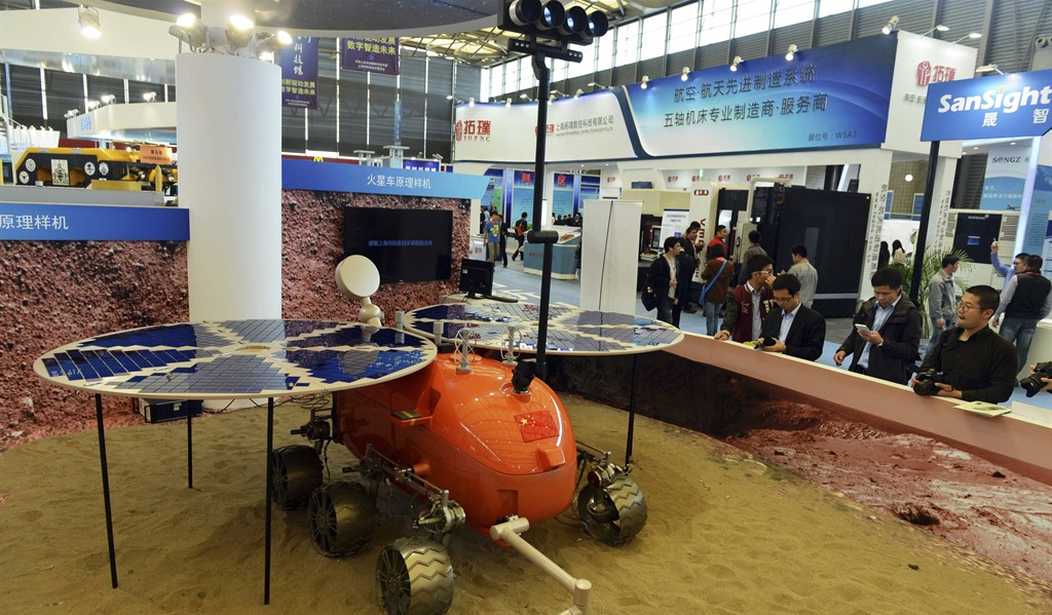We all know that President Trump’s four favorite words are “I told you so.”
This week, he has undoubtedly earned the right to mutter that phrase, signature smirk and all, no matter how much it grinds the gears of the mainstream media.
Partisan extremists laughed when the president announced his intent to create a Space Force as a sixth branch of the U.S. Military. He was ridiculed as the Star Trekkie in Chief, governing based on television-inspired impulse rather than what he studies and learns from defense analysts and briefings.
Well, China just displayed a model of its new super-heavy-lift rocket, the Long March 9, at the 20th China International Industrial Fair. At the event, Li Guoping, the Department of System Engineering director at the China National Space Administration (CNSA), said that it will be capable of lifting 140,000 kilograms – 140 metric tons – into low Earth orbit, which, if realized, would make it larger with higher payload capacity than the powerful rocket NASA is currently building.
So, who’s laughing now?
If these left-wing pseudo defense experts bothered to follow the news at all, they would know that the space race with China is not a new development; it’s been ongoing for decades and has progressively snowballed into one of the most pressing national security concerns today.
Over the last two decades, China has developed a space program that is second-to-none other than that of our own. The U.S.’s is lagging behind the growth trajectory by comparison, which senior military experts believe could soon harm our global military superiority.
As shown by Chinese military affairs expert Rick Fisher and Air Force Lieutenant General Steven L. Kwast, the reason is clear: China has said it’s aiming “to achieve control of low earth orbit in order to defeat the United States on Earth,” and they’re on a 10-year journey to operationalize space while we seem to have a drawn-out 50-year plan.
Recommended
This is a major national security problem that requires addressing. That’s why President Trump has started work on the Space Force – because he recognizes that “When it comes to defending America, it is not enough to merely have an American presence in space. We must have American dominance in space.”
While creating this new branch of the military was an essential step in correcting the mistakes of the past, it’s not enough. Part of the reason for the significant disparity in advancements in space prowess between China and the United States appears to be that China has undertaken a very careful, empirical-driven process, while America has taken a more haphazard, careless approach that brings more risk and less room for growth.
For example, take the two countries’ approach to crafting and launching rockets. With national threats growing larger but budget cuts becoming ever more possible, both countries perceive some degree of rocket reusability as a necessary means of cutting costs; however, their underlying plans and opinions on what’s practical couldn’t be any different.
Under a strategy called retro-propulsion, some U.S. contractors are trying to reverse the launch process, recovering the first stage of its rockets by flying them back to where they first launched. The data shows that the increased production time, high refurbishment costs, inefficient use of fuel, and smaller payload capacities on a per-rocket basis – not to mention the higher probability of failure that comes with more flying time – makes this strategy not much more affordable than traditional, non-reusable rockets. And yet, the government continues to provide funding to contractors who are obstinate in utilizing this approach.
In contrast, China recognizes the flaws in some U.S. contractors’ strategies and is trying out its hand with more sensible ways of achieving the same cost-saving objective. As outlined by Popular Mechanics, “The China National Space Administration (CNSA) thinks there are cheaper and simpler ways to get the same results. Namely, parachutes and airbags. In the CNSA's proposed system, parachutes would launch on the booster after it separates from the other stages of the rocket. A guidance system could be used to control movement, making sure the rocket component lands where it's supposed to. Then more parachutes would launch to slow it for landing and an airbag would deploy right before when it hits the ground.”
The data shows that China’s strategy is much more cost-effective than retro-propulsion, and the reason is rather intuitive. With higher payload capacity and less flight time, there is more efficiency and less room for risk.
History is also on the side of this strategy. While NASA never attempted to reuse its space capsules, it had a 100-percent success rate with recovering its spacecrafts during the Mercury, Gemini, and Apollo missions via parachute.
Other contractors – even American ones – are working to perfect this more refined reusability concept, mitigating oceanic weather and environmental risks by using helicopters to recover the engines more effectively. And yet, many Washington decision-makers continue to blindly support contractors that are intent on implementing the wasteful, more expensive re-launch approach as if there are no other alternative methods. Why?
President Trump is right that we need a Space Force, but what good will the Space Force be if we refuse to thoroughly explore every strategic option available? We can’t afford to give a rogue nation a leg-up and let a competitor thrive and become more powerful in the warfighting domain of the future. We must learn from our mistakes now while we still can.























Join the conversation as a VIP Member